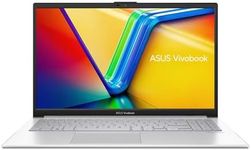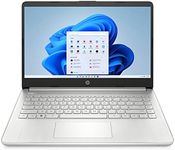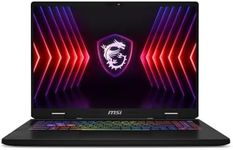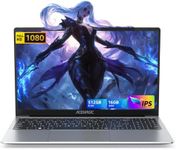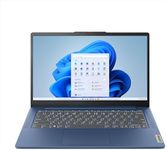Buying Guide for the Best CAD Laptops
When choosing a laptop for CAD (Computer-Aided Design) work, it's crucial to focus on performance, display quality, and portability. CAD software can be demanding, requiring a laptop that can handle complex calculations and renderings efficiently. Your choice should be guided by the specific CAD applications you use, the complexity of your projects, and whether you need to work on the go or primarily at a desk. Understanding the key specifications will help you make an informed decision that balances power, usability, and convenience.Processor (CPU)The processor is the brain of your laptop and is crucial for running CAD software smoothly. A powerful CPU can handle complex calculations and multitasking, which is essential for CAD work. Processors are typically divided into entry-level, mid-range, and high-end. Entry-level CPUs might struggle with larger projects, while mid-range CPUs can handle most tasks efficiently. High-end CPUs are best for very complex designs or if you plan to use the laptop for other demanding tasks like 3D rendering. Choose a CPU based on the complexity of your CAD projects and whether you need to run multiple applications simultaneously.
Graphics Card (GPU)The graphics card is responsible for rendering images and is particularly important for 3D CAD work. A dedicated GPU is preferable over integrated graphics, as it can significantly improve performance in rendering and visualizing complex models. GPUs are categorized into entry-level, mid-range, and high-end. Entry-level GPUs may suffice for 2D CAD work, while mid-range GPUs are suitable for most 3D tasks. High-end GPUs are necessary for very detailed 3D modeling and rendering. Your choice should depend on whether you work primarily in 2D or 3D and the complexity of your models.
RAMRAM (Random Access Memory) is crucial for multitasking and handling large files in CAD applications. More RAM allows your laptop to work with larger models and run multiple applications simultaneously without slowing down. RAM is typically available in increments of 8GB, 16GB, and 32GB or more. For basic CAD tasks, 8GB might be sufficient, but 16GB is recommended for more complex projects. If you work with very large models or need to run several demanding applications at once, consider 32GB or more. Choose based on the size and complexity of your projects and your multitasking needs.
StorageStorage affects how much data you can keep on your laptop and how quickly you can access it. Solid State Drives (SSDs) are faster than traditional Hard Disk Drives (HDDs) and can significantly improve the performance of your CAD software. Storage is usually measured in gigabytes (GB) or terabytes (TB). For CAD work, an SSD is recommended for faster load times and better overall performance. A 256GB SSD might be enough for basic use, but 512GB or 1TB is better for storing large files and projects. Consider your storage needs based on the size of your projects and whether you store files locally or in the cloud.
DisplayThe display is important for viewing your designs clearly and accurately. A larger, high-resolution screen can make it easier to work on detailed projects. Displays are measured by size (in inches) and resolution (such as Full HD, 4K). A 15-inch display is a good balance between portability and screen real estate, while a 17-inch display offers more space for detailed work. Higher resolutions like 4K provide sharper images, which can be beneficial for precision work. Choose a display size and resolution based on your need for portability versus the need for a detailed view of your designs.
PortabilityPortability is a consideration if you need to work on the go. Laptops vary in weight and battery life, which can affect how easily you can transport and use them outside of a traditional office setting. Lightweight laptops are easier to carry but may compromise on performance or screen size. Battery life is important if you need to work away from a power source for extended periods. Consider how often you need to move your laptop and whether you prioritize a lightweight design or longer battery life for your work environment.

